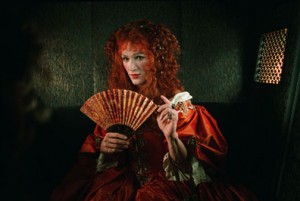In my last article we had left the hapless survivors of the wreck of the Batavia, marooned on the desolate Abrolhos islands off the Western Australian Coast. The commander, Pelsaart had set sail in the ship's longboats to raise the alarm and bring help. The survivors have been left under the control of the undermerchant Jeromiums Cornelisz, a man with an agenda of his own...
| The killings begin |
Cornelisz's first act was to take control of all weapons and what food and water had been salvaged from the wreck. He then sent a large group of soldiers under Wiebbe Hayes to look for water on West Wallaby Island. If Hayes found water he was to light a fire. However Cornelisz did not believe there would be water found - he had sent the soldiers to their death.
| Mass grave of Batavia victims |
The killing was ruthless and carefully planned. He targeted the weakest members of the survivors or those he believed would prevent some sort of opposition to his plans. The strongest survivors were killed at night and their bodies buried. Some were lured onto rafts, told they were being taken to other islands where the water supply was good, and then shoved overboard in the channels between the islands and left to drown. Others were executed, usually by having their throats cut. In one case the entire Predikant family were killed in their tent by mutineers wielding adzes. In another incident a boy, Cornelisz Aldersz, was beheaded just to demonstrate how sharp a sword blade was. A small group of women were kept alive and enslaved for the "common service" of the mutineers. Lucretia Jans was coerced into becoming Cornelisz's concubine.
Over on West Wallaby Island, Hayes had found food and water and wondered why his smoke signals went unanswered until a trickle of survivors began to find their way across to him with tales of the butchery being carried out by Cornelisz. Realising he and his men were now in grave danger of an attack from the mutineers, Hayes set about building a fort.
 |
| Hayes Fort on West Wallaby Island |
It was now a race to get to the rescue party and tell the tale. Hayes prevailed and after a short battle, the mutineers were rounded up. Pelsaart did not wait to return to Batavia to dispense justice. Cornelisz and the worst of the mutineers had their hands chopped off and were hanged on Seal Island. Loos and several others were offloaded on to mainland Australia and never heard of again - making them possibly the first European settlers on the Australian mainland (there were tales of sightings of unusually light skinned natives in the years to come). The others were dealt with in Batavia.
Of the 282 survivors of the wreck of the Batavia only 68 landed in Batavia.
The Batavia was not the only Dutch ship wrecked off the Western Australian coast. At least 3 other ships were lost in a hundred year period off that unforgiving coastline but none, fortunately, suffered the fate of the Batavia and its survivors. I can recall the excitement in the 1970s when the wreck of the Batavia was found and it can now be seen, in a remarkable state of preservation in the museum in Fremantle in Perth.
 |
| The Batavia in the museum in Fremantle |
There have been many books written on the subject. "Islands of the Angry Ghosts" by Hugh Edwards is an account not only of the shipwreck but of the subsequent discovery of the Batavia. The standard work is Henrietta Drake-Brockman's 1963 book Voyage to Disaster. A more recent account (released in March this year) is the book Batavia by Peter Fitzsimmons



